
How Orthodontic Care Impacts Overall Health Beyond Just Teeth
Orthodontic care is commonly associated with improving the appearance of one’s smile, but its benefits extend far beyond aesthetics. While braces, clear aligners, and other orthodontic treatments are designed to correct dental alignment, they play a crucial role in overall health. The expertise of orthodontic professionals and the use of advanced software tools for oral care professionals are transforming the way orthodontic care influences not only dental health but also overall well-being.
The Connection Between Oral Health and Overall Health
It’s widely recognized that the state of your oral health can have a direct impact on your general health. Poor oral hygiene and untreated dental issues such as misaligned teeth or an improper bite can lead to more serious health problems. Conditions like gum disease, tooth decay, and jaw misalignments have been linked to an increased risk of heart disease, diabetes, respiratory issues, and even complications during pregnancy.
Orthodontic care aims to address misalignments, known as malocclusions, which can contribute to these larger health problems. Misaligned teeth or jaws often cause difficulty with chewing, speaking, and breathing, which can result in discomfort or chronic conditions. By addressing these issues, orthodontic treatment does more than enhance appearance—it can significantly improve a person’s overall health.
The Role of Orthodontic in Promoting Health
The role of orthodontic care in promoting overall health is multifaceted and essential. Orthodontic experts are highly trained professionals who specialize in diagnosing and treating issues related to the alignment of teeth and jaws. Beyond cosmetic benefits, orthodontic treatment helps improve the function of the mouth, reducing the risk of problems such as jaw pain, chewing difficulties, and breathing issues. By ensuring that teeth are properly aligned, orthodontic experts also help prevent the development of oral health problems like tooth decay, gum disease, and temporomandibular joint (TMJ) disorders. Correcting bite issues can improve the overall quality of life by making everyday activities, such as eating and speaking, more comfortable and efficient. Additionally, orthodontic care can contribute to better sleep by addressing airway obstructions, making it a critical element of comprehensive health management.
When teeth are not properly aligned, they can cause a variety of health problems:
- Jaw Pain and TMJ Disorders: Misalignment of the teeth or jaw can lead to temporomandibular joint (TMJ) disorders. This condition affects the jaw joint, causing pain, discomfort, and difficulty in moving the jaw. Orthodontic treatment can help realign the teeth and jaw, alleviating these painful symptoms.
- Improved Digestion: When teeth are aligned correctly, they can function more effectively during chewing. This improves the initial breakdown of food, which helps in better digestion. Misaligned teeth often lead to inefficient chewing, which can affect digestion and overall nutrition.
- Enhanced Breathing: An improper bite or misaligned teeth can sometimes obstruct the airway, leading to issues like snoring or sleep apnea. Orthodontic care can correct these issues, improving airflow and reducing the risk of these sleep-related disorders.
- Preventing Gum Disease: Crooked teeth are harder to clean effectively, leading to plaque build-up and an increased risk of gum disease. By straightening teeth, orthodontic treatment makes it easier to maintain good oral hygiene, reducing the risk of gingivitis and periodontitis, which are linked to heart disease and diabetes.
Orthodontic Care and Psychological Well-Being
In addition to the physical health benefits, orthodontic treatment has been shown to improve mental and emotional well-being. A straight smile is often associated with confidence and positive self-esteem. People who undergo orthodontic treatment often report feeling better about their appearance, which can lead to greater social engagement and reduced anxiety.
Moreover, addressing alignment problems early in life can prevent the development of more serious psychological effects later on. Children and adolescents who feel self-conscious about their teeth are more likely to experience bullying or social exclusion. Correcting these issues can have a profound impact on their mental health and social development.
How Software Tools for Oral Care Professionals Enhance Treatment
Advancements in dental technology have also contributed significantly to improving the quality of orthodontic care. Software tools for oral care professionals, such as 3D imaging, digital treatment planning, and simulation software, allow orthodontic experts to develop highly personalized treatment plans for each patient.
These tools provide orthodontists with detailed views of a patient’s teeth, jaws, and facial structures, allowing them to plan and monitor treatment with a high level of precision. For example, digital impression software eliminates the need for traditional molds, providing a more comfortable experience for patients while offering more accurate results.
Additionally, software tools allow orthodontic professionals to simulate treatment outcomes before any physical work is done. This ability to predict how the teeth and jaws will move can lead to faster, more efficient treatments with better long-term results. Such technological advancements also help orthodontists make adjustments in real time, ensuring that patients receive the best possible care throughout their treatment journey.
Long-Term Health Benefits of Orthodontic Treatment
The long-term benefits of orthodontic care are vast and far-reaching. Correcting alignment issues early on can prevent the need for more invasive procedures down the road, saving both time and money. By addressing malocclusions before they lead to more serious health problems, orthodontic experts help ensure better oral health for years to come.
Furthermore, the improvements in functionality that come with proper alignment—such as better chewing, speaking, and breathing—are essential for overall quality of life. Orthodontic care isn’t just about achieving a beautiful smile; it’s about giving patients the tools they need for a healthier and more comfortable life.
Orthodontic care is about much more than straightening teeth—it’s a comprehensive approach to enhancing overall health. From improving digestion and airflow to reducing the risk of gum disease and enhancing psychological well-being, orthodontic treatments offer benefits that extend far beyond aesthetics. With the expertise of orthodontic professionals and the use of innovative software tools for oral care professionals, patients can expect a more personalized, efficient, and effective treatment experience.
By investing in orthodontic care, individuals not only improve the health and appearance of their teeth but also take an important step toward better overall health. Whether it’s through improved jaw function, better hygiene, or increased self-confidence, the impact of orthodontics reaches far beyond the smile.
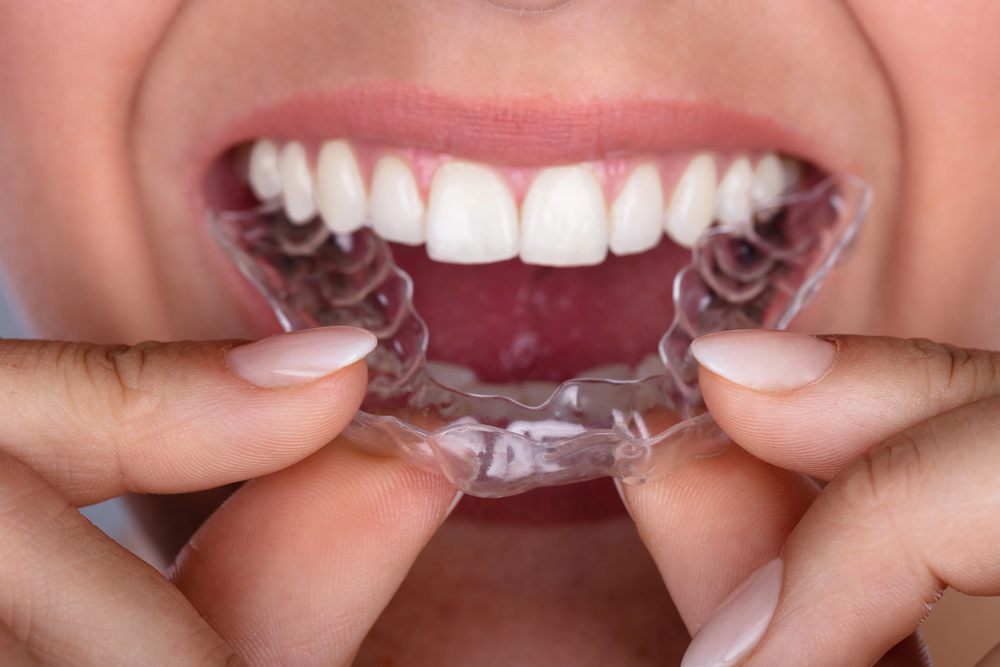
Why Invisalign is the Secret to a Picture-Perfect Smile for Beauty Enthusiasts
In today’s world, where beauty and self-expression are celebrated more than ever, a radiant smile has become a defining feature of confidence and charm. A perfect smile is not only an asset for personal relationships but also a key factor in professional success and social media appearances. For beauty enthusiasts, achieving that flawless smile has become a top priority, and Invisalign has emerged as the go-to solution for aligning teeth without compromising on aesthetics or comfort.
The Rise of Invisalign in the Beauty World
Traditional metal braces have long been the standard for correcting dental alignment issues. While effective, they’ve often been viewed as clunky, uncomfortable, and incompatible with modern beauty trends. Invisalign, with its clear and virtually invisible aligners, has revolutionized orthodontic care by offering a discreet and aesthetically pleasing alternative. Beauty enthusiasts, from influencers to everyday fashion-forward individuals, have embraced Invisalign as a seamless way to enhance their smiles without drawing unwanted attention.
One of Invisalign’s biggest appeals lies in its compatibility with a beauty-focused lifestyle. Unlike metal braces, which can dominate the appearance of the face, Invisalign aligners are barely noticeable. This makes them ideal for those who prioritize their appearance, whether for professional photoshoots, social media posts, or simply their daily interactions. Invisalign allows individuals to improve their dental alignment while maintaining their confidence and style.
Discreet Aesthetics for the Style-Conscious
In the beauty world, subtlety is often key. Whether you’re rocking bold lipstick or natural makeup, metal braces can feel like a visual distraction. Invisalign aligners, crafted from transparent material, allow the natural beauty of your teeth to shine through while they work their magic. This discreet design ensures that beauty enthusiasts can showcase their authentic selves without the worry of orthodontic devices stealing the spotlight.
Moreover, Invisalign aligners are custom-made to fit each individual’s teeth perfectly. This tailored approach not only ensures optimal results but also enhances comfort. Beauty enthusiasts who value a flawless look can confidently wear Invisalign in professional settings, during events, or while capturing candid moments, knowing their aligners are virtually undetectable.
A Seamless Fit for Beauty Routines
For beauty enthusiasts, maintaining a polished appearance is a top priority. Invisalign fits seamlessly into daily beauty routines without demanding significant sacrifices. The aligners are removable, allowing users to maintain their skincare and makeup regimens without interruption. Unlike metal braces, which can trap food and make cleaning cumbersome, Invisalign aligners can be taken out during meals and oral hygiene routines, making them both practical and hygienic.
This removability also allows beauty enthusiasts to experiment freely with their looks. Whether it’s applying bold lipstick or whitening treatments, Invisalign ensures that your smile remains the star of the show. Additionally, Invisalign wearers don’t need to worry about unsightly food particles or staining, making it easier to maintain a pristine appearance throughout the day.
Boosting Confidence and Self-Esteem
Beauty is as much about how you feel as how you look. Invisalign’s ability to discreetly correct dental imperfections can provide a significant boost to self-confidence. A misaligned smile can make individuals feel self-conscious, often leading to a reluctance to smile openly in social or professional settings. Invisalign’s subtle, effective approach to orthodontic care allows users to see progressive improvements in their smiles, encouraging them to embrace their beauty with newfound confidence.
Invisalign also caters to a wide range of dental issues, from minor gaps to complex misalignments, making it a versatile solution for beauty enthusiasts with varying needs. The aligners’ gradual adjustments mean that users can see noticeable results within months, keeping them motivated throughout their journey to a picture-perfect smile.
Social Media and the Invisalign Effect
In the age of selfies and social media, a beautiful smile is more important than ever. Platforms like Instagram, TikTok, and YouTube have placed a spotlight on appearances, with influencers and beauty gurus sharing every detail of their lives with their audiences. Invisalign’s discrete nature aligns perfectly with this trend, allowing individuals to document their orthodontic journey without compromising their visual appeal.
Many beauty influencers openly share their Invisalign experiences, highlighting the ease and effectiveness of the treatment. Their transparency not only inspires others to prioritize their dental health but also normalizes the idea of self-improvement through modern orthodontics. Invisalign has thus become a symbol of empowerment, encouraging individuals to take control of their smiles while embracing their unique beauty.
Enhancing Overall Facial Aesthetics
A beautiful smile isn’t just about straight teeth; it’s also about how your smile compliments your overall facial features. Invisalign helps achieve harmony by aligning teeth in a way that enhances your natural beauty. Proper dental alignment can improve the symmetry of your face, define your jawline, and even contribute to better posture and speech—all of which play a role in a polished and confident appearance.
For beauty enthusiasts who pay attention to every detail, Invisalign offers the opportunity to refine not just their smiles but their entire facial aesthetic. This holistic approach to beauty makes Invisalign a valuable addition to any self-care regimen.
Invisalign has redefined the way beauty enthusiasts approach orthodontic care. By combining discrete aesthetics, practicality, and transformative results, it has become the secret weapon for those seeking a picture-perfect smile. Whether you’re a fashion influencer, a makeup artist, or simply someone who values self-expression, Invisalign allows you to align your teeth without compromising your style or confidence.
A radiant smile is a timeless accessory, and Invisalign ensures that achieving one is easier and more stylish than ever. For beauty enthusiasts looking to enhance their natural charm, Invisalign is not just an orthodontic solution—it’s a statement of self-love and empowerment.
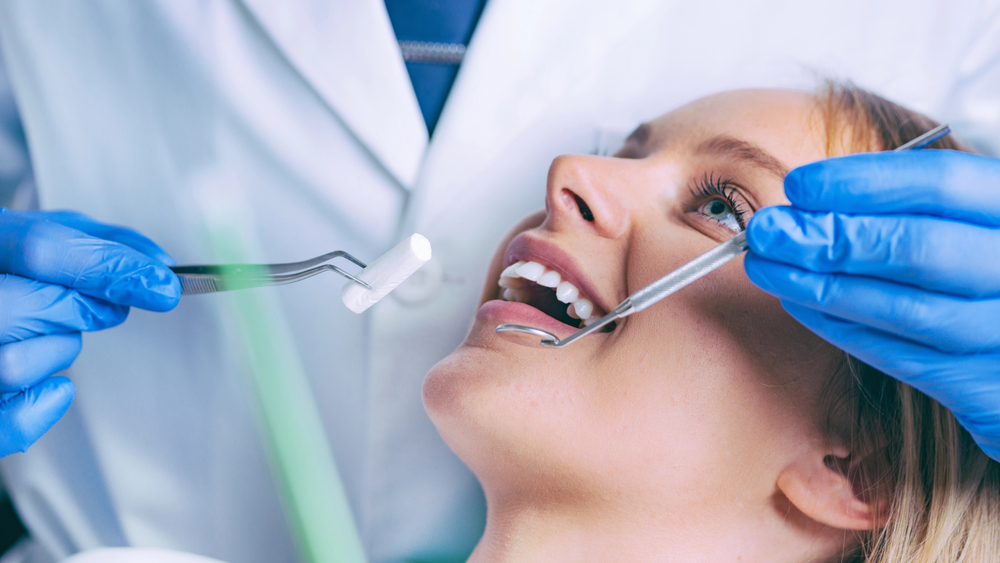
Sustainability in Dentistry: How Digital Tools Reduce Waste and Improve Efficiency
In recent years, dentistry has undergone a remarkable transformation with the integration of cutting-edge technologies. While these innovations have significantly improved patient care, they’ve also opened the door to a more sustainable and environmentally friendly approach to oral healthcare. The adoption of digital tools in dental practices is not only revolutionizing treatment methodologies but also contributing to a paradigm shift toward regenerative and sustainable dentistry. By reducing waste, enhancing efficiency, and promoting precision, digital dentistry aligns perfectly with the growing demand for eco-conscious healthcare solutions.
The Environmental Challenge in Traditional Dentistry
Traditional dentistry often involves materials and processes that generate significant waste. For example, physical impressions require single-use plastics, alginate, and other materials that are discarded after a single use. Similarly, outdated imaging technologies like film X-rays contribute to chemical waste due to the development process. Moreover, shipping physical molds and other dental products between labs and clinics involves packaging and transportation emissions, further increasing the environmental footprint of conventional dental practices.
These challenges underscore the urgent need for sustainable practices in dentistry. Enter digital dentistry: a comprehensive approach that leverages advanced technologies to minimize waste while improving patient outcomes.
Digital Smile Design: Transforming Aesthetic Dentistry
One of the most compelling advancements in digital dentistry is Digital Smile Design (DSD). This innovative technology enables dentists to create a highly personalized and precise treatment plan for patients seeking aesthetic improvements. By using digital imaging and computer-aided design, DSD allows clinicians to visualize and simulate the final results before initiating treatment.
Not only does this enhance patient satisfaction by aligning expectations, but it also eliminates the need for multiple trial-and-error physical prototypes. Traditional methods often require repeated adjustments and remakes of veneers or crowns, which generate excess waste. With DSD, these adjustments are handled digitally, reducing material consumption and cutting down on the energy and resources used during the manufacturing process. The result is a streamlined, waste-free approach to achieving a perfect smile.
3D Printing and CAD/CAM Technology: Revolutionizing Efficiency
Computer-Aided Design and Manufacturing (CAD/CAM) technology and 3D printing are at the forefront of sustainable dentistry. These tools enable dentists to create precise restorations such as crowns, bridges, and dentures in-house. Unlike traditional methods that rely on external dental labs, these technologies eliminate the need for shipping and packaging materials, drastically reducing carbon emissions.
Furthermore, 3D printing allows for the creation of dental products with minimal material waste. Traditional milling processes often result in significant material loss, as large portions of blocks are cut away to create the desired shape. In contrast, 3D printing is additive, meaning materials are only used where necessary. This approach not only reduces waste but also optimizes resource utilization, making it a cornerstone of regenerative and sustainable dentistry.
Intraoral Scanners: Reducing Single-Use Materials
Another game-changing digital tool in sustainable dentistry is the intraoral scanner. These devices replace the need for traditional impression materials by capturing highly accurate digital impressions of a patient’s teeth and gums. In addition to improving patient comfort, intraoral scanners eliminate the use of disposable trays and alginate materials, which are often discarded after a single use.
By transitioning to digital impressions, dental practices can significantly reduce their reliance on single-use plastics and other non-biodegradable materials. Additionally, digital impressions can be stored electronically, eliminating the need for physical storage space and reducing paper waste associated with traditional record-keeping.
Digital Workflows: Enhancing Efficiency and Reducing Carbon Footprints
Digital workflows in dentistry—from diagnosis to treatment planning—are inherently more efficient than traditional methods. For instance, digital X-rays not only provide superior imaging quality but also eliminate the chemical waste associated with film processing. Similarly, virtual consultations and teledentistry solutions reduce the need for patients to travel to clinics, cutting down on transportation-related emissions.
Moreover, digital systems enable seamless communication between dental professionals, laboratories, and patients. This level of coordination reduces delays and ensures that treatments are completed more quickly and accurately, minimizing the need for repeat procedures. By embracing these digital workflows, dental practices can significantly reduce their environmental impact while delivering faster and more effective care.
Aligning with Regenerative and Sustainable Dentistry
The concept of regenerative and sustainable dentistry goes beyond waste reduction; it emphasizes the importance of restoring and maintaining oral health in a way that benefits both patients and the planet. Digital tools play a pivotal role in achieving this vision by promoting precision and preventing overtreatment.
For example, advanced diagnostic tools powered by artificial intelligence (AI) can detect oral health issues at an early stage, allowing for minimally invasive treatments. This reduces the need for extensive restorative procedures, which often involve energy-intensive processes and non-biodegradable materials. Additionally, digital records and monitoring systems enable long-term preventive care, ensuring that patients maintain their oral health without unnecessary interventions.
A Greener Future for Dentistry
As the world becomes increasingly conscious of environmental sustainability, dental practices must adapt to meet these expectations. By integrating digital tools and workflows, the dental industry can move toward a greener future that prioritizes both patient outcomes and planetary health.
From Digital Smile Design to 3D printing, the advancements in digital dentistry are paving the way for a more sustainable and efficient approach to oral healthcare. These innovations not only reduce waste and carbon footprints but also enhance the overall patient experience. As regenerative and sustainable dentistry continues to evolve, the integration of digital technologies will undoubtedly play a central role in shaping the future of the profession.
In conclusion, digital dentistry represents a win-win solution: better care for patients and a more sustainable approach to healthcare. By embracing these tools, dental professionals can lead the charge toward a greener, more responsible future for the industry.
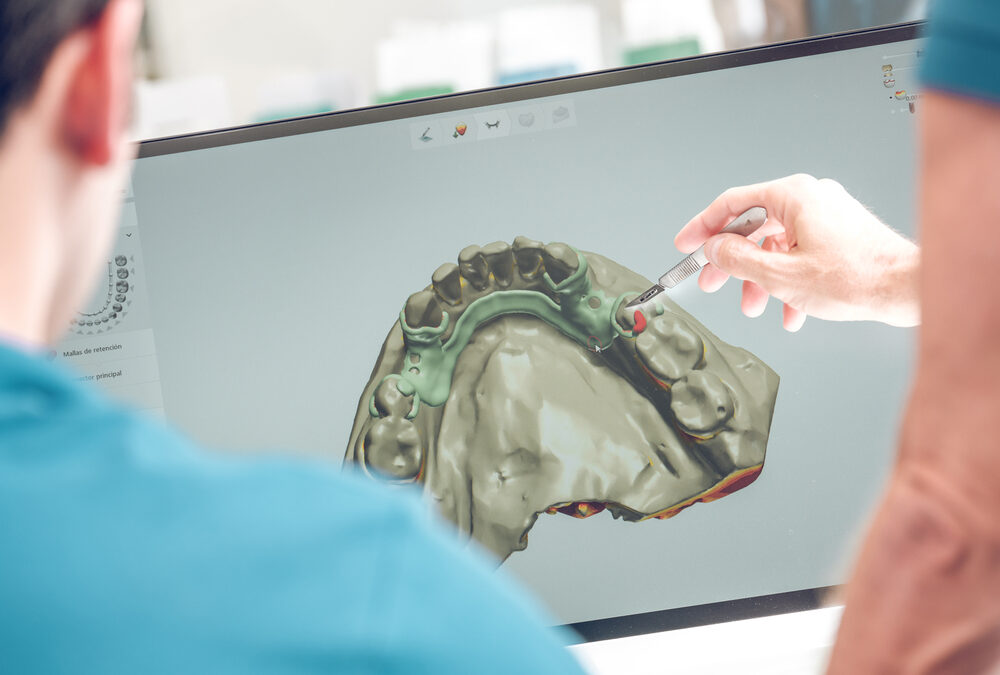
How Modern Orthodontic Treatments Transform Smiles and Confidence
Orthodontics has come a long way from its origins. Today, modern orthodontic treatments offer individuals the chance to achieve straight, beautiful smiles while also boosting their confidence and overall oral health. With advancements in technology and an array of treatment options, patients can now enjoy more effective, comfortable, and discreet solutions than ever before. Among the most popular options are orthodontic braces and clear aligners, both of which continue to revolutionize the industry. Additionally, oral care practices, such as using mouthwash, play an essential role in maintaining the results of orthodontic treatment.
The Role of Orthodontic Braces in Modern Dentistry
Orthodontic braces remain one of the most effective tools for correcting misaligned teeth and bite issues. Modern braces have evolved significantly from the bulky metal appliances of the past. Today, patients can choose from several types, including:
– Traditional Metal Braces: These braces are lighter, more comfortable, and less conspicuous than earlier models.
– Ceramic Braces: Made from tooth-colored materials, these braces blend in with natural teeth, making them a more discreet option.
– Lingual Braces: Positioned on the back of the teeth, lingual braces are virtually invisible from the outside.
Braces work by applying continuous pressure over time to gradually shift teeth into their proper positions. This process not only improves the aesthetic appearance of a smile but also addresses functional issues such as overbites, underbites, and crowding. Proper alignment achieved through orthodontic braces can help prevent long-term dental problems, including uneven wear, gum disease, and jaw pain.
Clear Aligners: A Game-Changer in Orthodontics
For patients seeking an alternative to traditional braces, clear aligners have become an increasingly popular option. Invisalign and similar systems use custom-made, transparent trays to gradually move teeth into alignment. These trays are nearly invisible, making them an attractive choice for adults and teens who want a discreet treatment option.
Clear aligners offer several advantages over traditional braces:
- Comfort: Without brackets and wires, clear aligners are smoother and less likely to irritate the gums and cheeks.
- Convenience: Aligners are removable, making it easier to eat, brush, and floss without restrictions.
- Aesthetic Appeal: The transparency of aligners ensures that treatment is subtle and unnoticeable.
Despite their benefits, clear aligners require discipline from patients. They must be worn for 20-22 hours per day and replaced every one to two weeks to maintain progress. Patients who commit to this regimen often see excellent results comparable to those achieved with braces.
The Psychological Impact of Orthodontic Treatments
One of the most significant benefits of orthodontic treatment is the boost in self-confidence that comes with a straight, healthy smile. Crooked or misaligned teeth can lead to feelings of self-consciousness and even social anxiety. By correcting these issues, orthodontic treatments empower individuals to smile freely and feel more confident in personal and professional settings.
Moreover, improved oral health contributes to better overall well-being. Misaligned teeth are harder to clean, increasing the risk of cavities and gum disease. By addressing alignment issues, orthodontic treatments promote a healthier mouth, reducing the need for more invasive dental procedures in the future.
The Importance of Oral Hygiene During Treatment
Maintaining oral hygiene is critical during orthodontic treatment, whether using braces or aligners. Plaque buildup around brackets, wires, or aligners can lead to cavities, staining, and gum disease. Incorporating good oral care practices ensures long-lasting results and prevents complications.
Tips for Maintaining Oral Hygiene with Orthodontic Braces:
- Brushing: Use a soft-bristled toothbrush and fluoride toothpaste to clean teeth thoroughly after every meal. Pay extra attention to areas around brackets and wires.
- Flossing: Floss threaders or orthodontic flossers make it easier to clean between teeth and under wires.
- Mouthwash: Antibacterial mouthwash helps reduce plaque and prevent gum disease. Patients with braces can benefit from rinsing daily to reach areas that are difficult to clean with a toothbrush.
Tips for Clear Aligner Wearers:
- Cleaning Aligners: Rinse and brush aligners with a soft toothbrush and non-abrasive cleanser to keep them free of bacteria and stains.
- Oral Care Routine: Brush and floss before reinserting aligners to prevent trapping food particles against teeth.
- Mouthwash: Using mouthwash can complement brushing and flossing by killing bacteria and freshening breath.
The Future of Orthodontics
Advancements in technology continue to shape the future of orthodontic treatments. Digital imaging, 3D printing, and artificial intelligence are streamlining treatment planning and improving accuracy. These innovations make it possible to predict outcomes more effectively and provide patients with tailored solutions that suit their needs and lifestyles.
In addition, faster treatment options, such as accelerated orthodontics, are becoming more widely available. These methods use techniques like vibration devices or micro-osteoperforation to speed up tooth movement, reducing overall treatment time.
Modern orthodontic treatments, from advanced orthodontic braces to innovative clear aligners, are transforming the way individuals achieve straighter teeth and healthier smiles. Beyond aesthetics, these treatments significantly improve oral health and boost self-confidence. However, success requires a commitment to good oral hygiene practices, including the use of tools like mouthwash, to maintain healthy teeth and gums during treatment. As technology continues to evolve, the future of orthodontics holds even more promise, ensuring that achieving the perfect smile is both accessible and efficient for all.
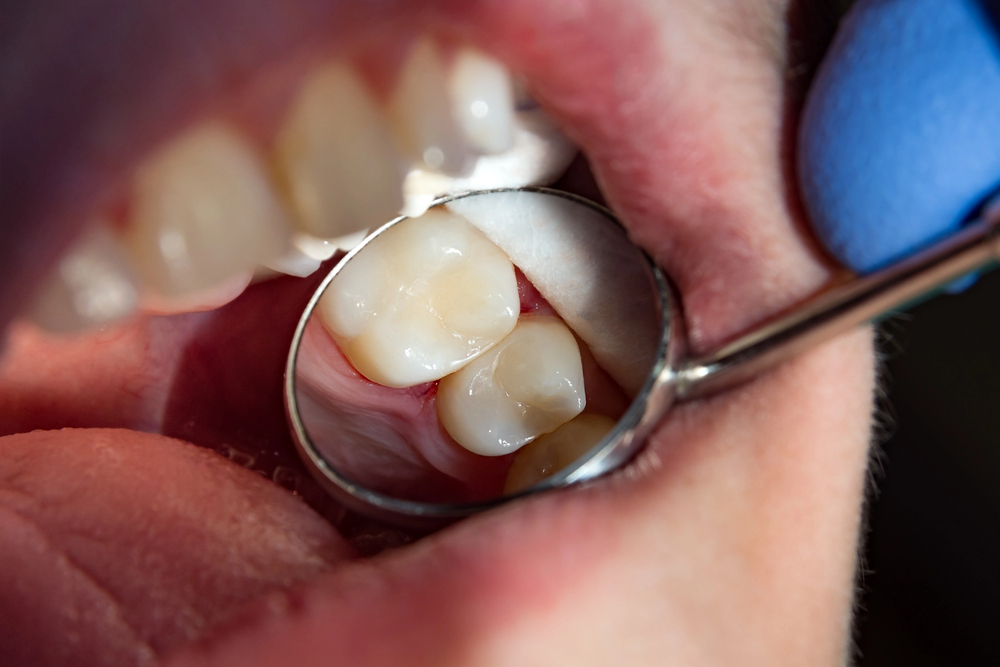
Top Trends in Dental Fillings: What Patients Should Expect in 2025
Dental fillings have long been an essential component of restorative dental care, allowing patients to restore function and aesthetics to damaged teeth. As technology advances, so do the materials and techniques used in dental fillings, and 2025 is poised to be a year of significant transformation in the field. Patients can expect a host of exciting developments that will improve both the effectiveness and the experience of receiving dental fillings. In this article, we’ll explore the top trends in dental fillings and what they mean for patients in 2025.
1. Advancements in Biocompatible Materials
One of the most notable trends in dental fillings is the increasing use of biocompatible materials. Biocompatibility refers to materials that are safe, non-toxic, and harmonious with the body. In recent years, dental professionals have moved away from traditional amalgam fillings, which contain mercury, and towards materials such as composite resins and ceramics that are not only more aesthetically pleasing but also safer for patients.
As we move toward 2025, the emphasis will be on using materials that are even more biocompatible. This includes the development of fillings made from bioactive materials, which can actively contribute to the healing of the tooth. For instance, bioactive resins release fluoride or calcium to promote remineralization, thus strengthening the tooth structure and reducing the risk of further decay. This will make dental fillings not only restorative but also preventative.
2. 3D Printing and Customization
The advent of 3D printing technology is revolutionizing the dental field, and dental fillings are no exception. In 2025, patients can expect more customized and precise fillings thanks to the ability to 3D print restorations. Dentists will be able to create fillings tailored specifically to the unique anatomy of a patient’s tooth, resulting in a better fit, less discomfort, and a more natural appearance.
3D printing also allows for the rapid production of dental fillings, reducing wait times and improving the overall patient experience. For example, if a patient requires a filling for a cavity, the dentist could design and print a custom restoration in a matter of hours, allowing the patient to receive treatment in a single visit rather than multiple appointments.
3. AI and Robotics in Dental Procedures
Artificial intelligence (AI) and robotics have already begun to play a role in dentistry, and their impact on dental fillings will continue to grow in the coming years. AI algorithms are increasingly being used to analyze X-rays and scans, helping dentists diagnose cavities and other dental issues with greater accuracy. This can ensure that fillings are placed at the optimal time, preventing further damage to the tooth.
Robotics, on the other hand, will help automate certain aspects of the filling process, allowing for more precision and consistency. This can be particularly beneficial in complex cases, where the dentist may need to fill hard-to-reach cavities. Robotics will also improve the efficiency of the procedure, reducing the time required for the patient and minimizing discomfort.
4. Faster, More Comfortable Procedures
As technology improves, so do the tools and techniques used to place dental fillings. One of the key trends for 2025 is the focus on making the filling process faster and more comfortable for patients. New advancements in laser dentistry and advanced sedation techniques will make dental procedures less invasive and more pain-free.
Lasers, for example, can be used to remove decay more precisely and with less discomfort compared to traditional methods. This will lead to quicker and less invasive filling procedures, allowing patients to return to their daily routines with minimal disruption. Additionally, new sedation methods are being developed to ensure that even the most anxious patients can undergo dental work without stress or pain.
5. Preventative Benefits: How Dental Fillings Can Promote Long-Term Health
An emerging trend in dental fillings is their ability to contribute to overall oral health and prevent future dental issues. Traditionally, dental fillings have been used to treat cavities and restore damaged teeth. However, with the development of advanced filling materials and techniques, fillings are now able to do more than simply fill a hole in a tooth—they can actively help protect the tooth from further decay.
For example, some fillings are designed to release fluoride or other minerals that strengthen the enamel of the tooth, reducing the likelihood of future cavities. Additionally, materials that better mimic the natural tooth structure can help reduce wear and tear on surrounding teeth, further contributing to long-term oral health. These fillings not only restore function and appearance but also help to preserve dental health for years to come.
6. Dental Health and Its Effect on Overall Health
As research continues to highlight the connection between oral health and overall health, it’s becoming increasingly clear that dental fillings do more than just maintain a healthy smile. Proper dental care, including the use of fillings, plays an important role in preventing the spread of oral infections that can affect other parts of the body.
For children, in particular, dental fillings can have a significant impact on their overall health. A child’s dental health directly affects their overall well-being, including their ability to eat, speak, and focus on daily activities. Cavities and untreated dental issues can lead to pain, infection, and even difficulties with school performance. By addressing dental problems early and using modern, effective fillings, parents can help ensure that their children’s teeth remain healthy, which in turn promotes their overall health and development.
7. Eco-Friendly and Sustainable Fillings
Sustainability is a growing trend across many industries, and dentistry is no exception. In 2025, more dentists will turn to eco-friendly materials for fillings, reducing the environmental impact of dental care. Materials such as bioplastics and recycled resins are becoming more common in dental fillings, offering patients an environmentally conscious choice without sacrificing quality or performance.
As awareness of environmental issues continues to rise, patients can expect to see more options for sustainable fillings that align with their values while maintaining the high standards of care and durability they expect from dental restorations.
The field of dental fillings is evolving rapidly, driven by advances in technology, materials, and patient care. In 2025, patients can expect faster, more comfortable, and more personalized filling procedures. Biocompatible materials, 3D printing, and AI will all contribute to a more effective and efficient treatment experience. Additionally, the growing understanding of how dental health affects the child’s overall health will continue to shape the way fillings are used in pediatric dentistry.
Whether you’re considering dental fillings for yourself or your child, the future looks bright. With these exciting trends on the horizon, patients can look forward to a more effective, comfortable, and sustainable approach to dental care.
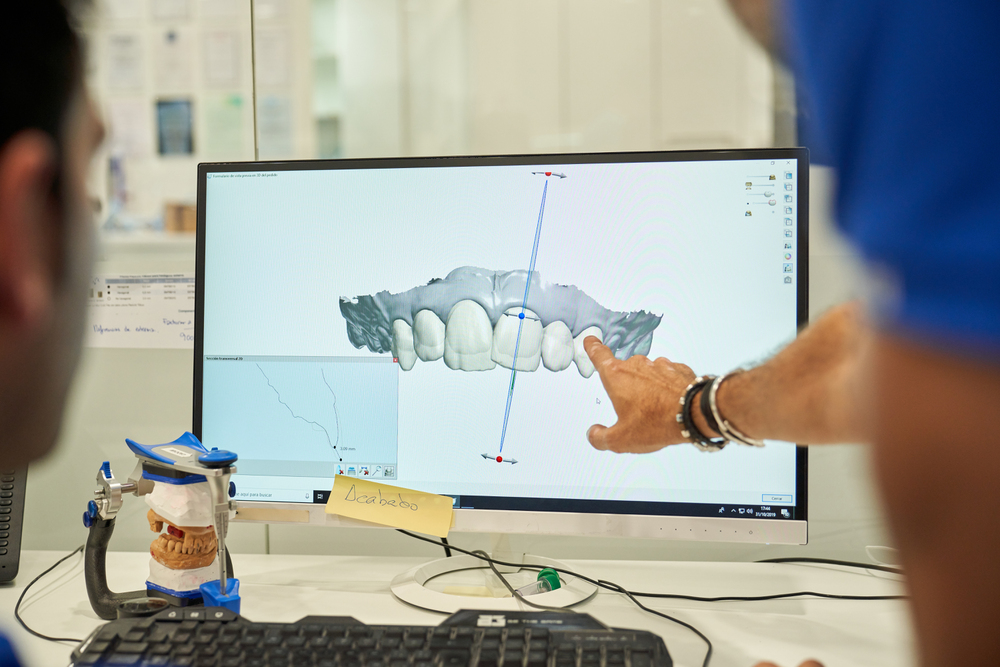
Why Digital Smile Design is the Future of Cosmetic Dentistry
The field of cosmetic dentistry has witnessed remarkable advancements in recent years, with technology playing a pivotal role in shaping modern practices. Among these innovations, digital smile design (DSD) has emerged as a groundbreaking tool that transforms the way dental professionals approach smile makeovers. By combining artistry with cutting-edge technology, DSD is setting a new standard for patient care, precision, and aesthetics. But why is digital smile design being hailed as the future of cosmetic dentistry? Let’s delve deeper into its advantages and implications.
Understanding Digital Smile Design
Digital smile design is a revolutionary concept that uses advanced imaging and software tools to create a customized roadmap for a patient’s smile transformation. It involves analyzing facial features, dental structure, and oral health to design a smile that harmonizes with the patient’s unique appearance. Unlike traditional methods, which often rely on physical molds and manual adjustments, DSD enables dental practitioners to visualize, plan, and execute treatments with unparalleled accuracy.
The process begins with high-resolution photographs, videos, and 3D scans of the patient’s face and teeth. These digital assets are then uploaded into specialized software, allowing dentists to manipulate the design virtually. This approach not only provides a clear visual representation of the expected outcome but also facilitates open communication between the dentist and the patient. Patients can preview their new smile and provide feedback, ensuring they are actively involved in the decision-making process.
Personalized Treatment Plans
One of the key reasons why digital smile design is revolutionizing cosmetic dentistry is its ability to create highly personalized treatment plans. Every patient’s face is unique, and their smile should reflect that individuality. DSD considers factors like facial symmetry, lip movement, and even emotional expressions to craft a smile that looks natural and complements the patient’s overall appearance.
For instance, a patient with a broad smile may require different proportions and contours than someone with a narrower dental arch. DSD enables dentists to tailor treatments to these specific needs, ensuring optimal results. This personalized approach not only enhances aesthetic outcomes but also boosts patient confidence and satisfaction.
Improved Accuracy and Predictability
Traditional smile design methods often involve a degree of guesswork, which can lead to unpredictable results. In contrast, DSD leverages technology to enhance precision. By using 3D imaging and simulation tools, dentists can visualize how treatments will affect a patient’s smile and overall facial aesthetics before any procedure begins.
This level of accuracy minimizes errors and reduces the need for adjustments during treatment. Additionally, the digital workflow streamlines communication between dental professionals and laboratories, ensuring that restorations such as veneers, crowns, and aligners are fabricated to exact specifications. The result is a more efficient process and a higher likelihood of achieving the desired outcome on the first attempt.
Enhanced Patient Experience
A significant advantage of digital smile design lies in its ability to enhance the patient experience. Many individuals seeking cosmetic dentistry are anxious about the potential results, as traditional methods often leave them uncertain about the final appearance. With DSD, patients can see a digital preview of their new smile before any physical changes are made. This visual representation fosters trust and confidence in the treatment plan.
Moreover, the collaborative nature of DSD ensures that patients feel heard and valued. Dentists can incorporate patient preferences into the design, addressing concerns and aligning the final result with their expectations. This patient-centered approach not only improves satisfaction but also strengthens the dentist-patient relationship.
Integration with Holistic Oral Health
While DSD focuses primarily on aesthetics, it also emphasizes the importance of overall oral health. Cosmetic dentistry procedures often require a strong foundation of healthy teeth and gums to achieve long-lasting results. Proper hygiene is key to a healthy mouth and body, and DSD integrates this principle into its methodology.
Before beginning a smile makeover, dentists assess the patient’s oral health to address any underlying issues such as cavities, gum disease, or misalignment. By prioritizing oral health alongside aesthetics, DSD ensures that the final outcome is not only beautiful but also sustainable. This holistic approach underscores the connection between oral hygiene and overall well-being, encouraging patients to adopt better habits for long-term success.
Sustainability and Efficiency
Digital smile design aligns with the growing demand for sustainable and efficient dental practices. The digital workflow reduces the need for physical materials such as molds and models, minimizing waste and environmental impact. Additionally, the precision of digital tools decreases the likelihood of errors, reducing the need for repeat procedures and conserving resources.
Furthermore, DSD saves time for both patients and practitioners. With accurate simulations and efficient communication, treatments are often completed faster than with traditional methods. This streamlined process is particularly beneficial for busy patients seeking quick yet effective solutions.
The Future of Cosmetic Dentistry
As technology continues to advance, digital smile design is poised to play an even greater role in the future of cosmetic dentistry. Emerging innovations such as artificial intelligence and augmented reality are expected to enhance DSD capabilities, making smile transformations even more personalized and precise. AI-driven algorithms could analyze patient data to suggest optimal treatment plans, while augmented reality tools might allow patients to “try on” their new smile in real-time.
Moreover, the accessibility of DSD is likely to increase as the technology becomes more widespread. This democratization of advanced cosmetic dentistry tools will enable more patients to benefit from its advantages, bridging the gap between cutting-edge innovation and everyday dental care.
Digital smile design is not just a technological advancement; it represents a paradigm shift in cosmetic dentistry. By prioritizing precision, personalization, and patient engagement, DSD is setting a new standard for smile makeovers. It seamlessly integrates aesthetics with oral health, reinforcing the vital role that proper hygiene plays in maintaining a healthy mouth and body. As the future of cosmetic dentistry unfolds, digital smile design will undoubtedly remain at the forefront, transforming smiles and lives with its innovative approach.
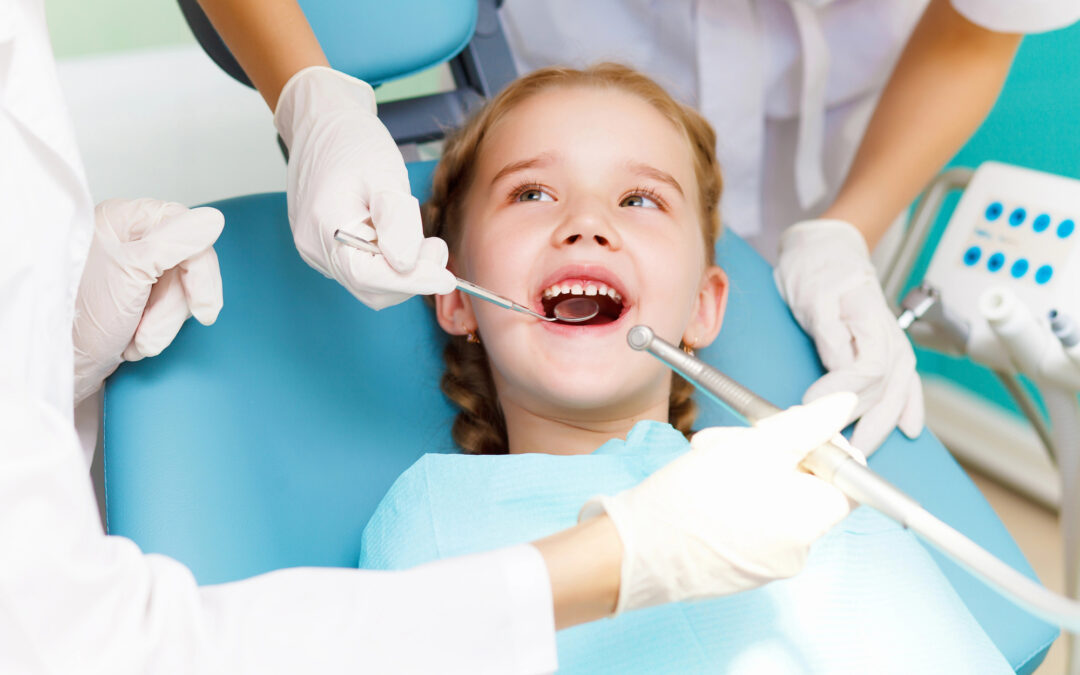
Early Orthodontic Intervention: Why Kids as Young as 7 May Need an Evaluation
Orthodontics has come a long way in improving smiles, boosting confidence, and enhancing oral health. While many people associate braces and aligners with teenagers, early orthodontic evaluations in childhood can play a crucial role in preventing or mitigating dental issues later in life. In fact, the American Association of Orthodontists (AAO) recommends that children undergo their first orthodontic evaluation by the age of seven. But why so early? Let’s explore the benefits and importance of early orthodontic intervention and how it ties into overall early childhood dental care.
The Foundation of Early Childhood Dental Care
Early childhood dental care is the cornerstone of maintaining oral health and setting the stage for a lifetime of healthy smiles. From the moment a child’s first tooth erupts, typically around six months of age, parents are encouraged to prioritize oral hygiene and regular dental checkups. By the time a child reaches the age of seven, a combination of baby teeth, permanent teeth, and jaw development provides an opportunity for orthodontists to assess potential issues. This early assessment can help identify problems such as:
– Crowded or misaligned teeth
– Bite issues, such as overbite, underbite, or crossbite
– Jaw growth discrepancies
– Prolonged thumb-sucking habits or other oral behaviors affecting dental health
Orthodontics is not just about aesthetics; it’s about function and long-term oral health. Early orthodontic evaluations ensure that problems are addressed promptly, preventing more severe complications in the future.
Why Age Seven?
By age seven, a child’s mouth is at a unique developmental stage. At this age, children typically have a mix of primary (baby) teeth and permanent teeth, which allows orthodontists to identify potential alignment and bite issues. Additionally, the jaw is still growing, which makes it more malleable and responsive to orthodontic treatments. Early detection of problems enables orthodontists to create a personalized treatment plan that can guide the growth and development of teeth and jaws effectively.
Benefits of Early Orthodontic Intervention
1. Guiding Jaw Growth
Early orthodontic treatments can help guide the growth of the jaw, ensuring that it’s properly aligned. For example, if a child’s upper jaw is too narrow, orthodontic devices like expanders can be used to widen it. This reduces the likelihood of more invasive treatments, such as jaw surgery, later in life.
2. Reducing the Risk of Tooth Extraction
By addressing issues like crowding early on, orthodontists can create more space for permanent teeth to emerge properly. This reduces the need for extracting teeth during teenage years to correct overcrowding.
3. Correcting Harmful Habits
Prolonged thumb-sucking or tongue-thrusting can lead to bite problems and misaligned teeth. Early intervention can help children break these habits and minimize their impact on oral development.
4. Improving Speech Development
Misaligned teeth or improper jaw positioning can sometimes affect a child’s ability to articulate certain sounds. Orthodontics can correct these issues, improving speech clarity.
5. Boosting Confidence
Dental issues can affect a child’s self-esteem. Early intervention can enhance their smile and build confidence during formative years.
6. Preventing Future Dental Problems
Misaligned teeth and improper bites can lead to problems like tooth decay, gum disease, and jaw pain. Addressing these issues early can save time, money, and discomfort in the future.
What to Expect During an Early Orthodontic Evaluation
An early orthodontic evaluation is a simple, non-invasive process. During the initial consultation, the orthodontist will:
- Examine the child’s teeth, gums, and jaw to identify any signs of misalignment or bite issues.
- Take X-rays to get a detailed view of the teeth and jaw structure.
- Discuss the child’s oral habits, such as thumb-sucking or teeth grinding, and their potential impact.
- Provide a personalized treatment plan if necessary, which may include monitoring the child’s growth, using space maintainers, or initiating phase-one orthodontic treatment.
Phase-one treatment, also known as interceptive orthodontics, typically begins when a child still has a mix of baby and permanent teeth. Common treatments include expanders, partial braces, or other appliances designed to address specific issues.
Myth-Busting: “Isn’t It Too Early for Braces?”
A common misconception among parents is that orthodontic treatments are only for teenagers. While it’s true that many treatments, such as full braces, are often started during the teen years, early orthodontic intervention focuses on preventing or minimizing problems before they become severe. In many cases, early treatments can shorten or simplify the orthodontic process later on.
Partnering with Your Orthodontist for Long-Term Success
Orthodontics is a collaborative process, and early childhood dental care sets the foundation for successful outcomes. Parents play a critical role in ensuring that children maintain good oral hygiene, attend regular dental checkups, and follow the orthodontist’s recommendations. Encouraging children to develop positive attitudes toward dental care early in life will make orthodontic treatments smoother and more effective.
Early orthodontic intervention is an essential component of early childhood dental care. Evaluating a child’s orthodontic needs by age seven allows for proactive treatment that can guide jaw growth, correct bite issues, and prevent future complications. By addressing these concerns early, parents can help their children achieve not only a beautiful smile but also a lifetime of healthy oral habits. If your child is approaching the age of seven or has never had an orthodontic evaluation, now is the perfect time to consult with a trusted orthodontist. A small step today can lead to significant benefits for their oral health and overall well-being.

Smile Makeovers: Personalized Tooth Restoration for Women
A self-assured smile has the power to illuminate a space and create a memorable impression. For women, a beautiful smile often represents more than just aesthetics; it’s a reflection of health, confidence, and vitality. The most recent developments in dentistry and improvements in restoring teeth have made it easier than ever to get the ideal smile. This article explores how personalized tooth restoration is transforming smile makeovers for women.
The Importance of Personalized Tooth Restoration
Tooth restoration is a broad term encompassing various dental procedures designed to repair or replace damaged, decayed, or missing teeth. For women, the significance of personalized tooth restoration lies in its ability to cater to individual needs, preferences, and lifestyles. From color matching to ensure natural aesthetics to designing teeth restorations that suit a woman’s facial structure, the personalization aspect ensures that every smile makeover feels uniquely hers.
Women’s dental health needs often differ from men’s due to factors like hormonal changes during pregnancy, menopause, or certain medical conditions. Personalized tooth restoration addresses these specific challenges, providing not only aesthetic improvements but also long-term oral health solutions.
Latest Trends in Dentistry for Smile Makeovers
The field of dentistry is continuously evolving, offering innovative solutions for tooth restoration that make smile makeovers more efficient, durable, and aesthetically pleasing. Here are some of the latest trends in dentistry that are shaping personalized smile makeovers for women:
1. Digital Smile Design (DSD)
Digital Smile Design uses advanced imaging technology to create a virtual model of the patient’s new smile. This tool allows women to visualize their smile makeover before any procedures begin. Dentists can make precise adjustments to ensure the final results meet expectations.
2. 3D Printing in Dentistry
3D printing is revolutionizing tooth restoration by enabling the creation of highly precise dental prosthetics such as crowns, bridges, and veneers. The technology reduces production time and ensures a perfect fit, enhancing comfort and functionality.
3. Minimally Invasive Procedures
Women often prefer minimally invasive dental procedures that preserve natural tooth structure while delivering excellent results. Techniques like no-prep veneers and adhesive bonding align with this preference, providing effective tooth restoration with minimal discomfort and downtime.
4. Biomimetic Dentistry
Biomimetic dentistry focuses on preserving and mimicking natural tooth structure. This approach uses materials and techniques that replicate the strength, flexibility, and appearance of natural teeth, ensuring long-lasting and aesthetically pleasing results.
5. Teeth Whitening Innovations
Advanced teeth whitening systems, including laser treatments and custom at-home kits, are now safer and more effective. These innovations complement tooth restoration procedures, ensuring a harmonious and radiant smile.
Popular Tooth Restoration Procedures for Women
A variety of tooth restoration procedures can be tailored to meet women’s unique needs. Some of the most popular options include:
– Dental Veneers: Weak, specially crafted shells that enhance the visual appeal of teeth by protecting their front surfaces. Women who want to fix gaps, cracks, or discolouration can consider veneers.- Dental Implants: A long-lasting solution for missing teeth, dental implants offer unparalleled stability and a natural look.
– Composite Bonding: A cost-effective option for repairing minor imperfections like chips or cracks. The resin is matched to the tooth’s natural color for seamless results.
– Crowns and Bridges: These restorations are commonly used for more extensive tooth damage or replacement, offering durability and aesthetic appeal.
– Inlays and Onlays: These are sometimes referred to as partial crowns, and they are placed on teeth that are badly decayed for restorations but not sufficiently damaged for complete crowns.
The Psychological Impact of a Smile Makeover
The benefits of personalized tooth restoration extend beyond physical appearance. After having a smile redesign, many women report feeling much more comfortable and confident. A radiant smile can enhance social interactions, improve professional opportunities, and contribute to overall well-being.
According to research, those who have gorgeous appearance, healthy grins are frequently seen as more successful and friendly. For women, this can have profound effects, helping them feel more empowered in both personal and professional settings.
How to Choose the Right Dentist for Your Smile Makeover
Selecting the right dentist is a crucial step in achieving the best results from your smile makeover. Here are some tips:
1. Look for Expertise: Choose a dentist with extensive experience in cosmetic and restorative dentistry. Check their qualifications and ask to see before-and-after photos of previous patients.
2. Prioritize Communication: A good dentist will take the time to understand your goals and explain the available options. They should involve you in the planning process to ensure your expectations are met.
3. Check Reviews: Patient testimonials can provide valuable insights into the dentist’s skills, professionalism, and patient care.
4. Technology Matters: Opt for a dental practice that embraces the latest trends in dentistry, such as digital imaging and 3D printing, to ensure the highest quality results.
Personalized tooth restoration is redefining smile makeovers for women, combining advanced technology with tailored care to deliver stunning results. From addressing specific dental health needs to incorporating the latest trends in dentistry, the journey to a perfect smile has never been more exciting.
Whether you’re looking to correct imperfections, restore functionality, or simply enhance your natural beauty, tooth restoration offers a world of possibilities. By choosing the right procedures and partnering with an experienced dentist, you can achieve a smile that not only looks amazing but also reflects your unique personality and style,
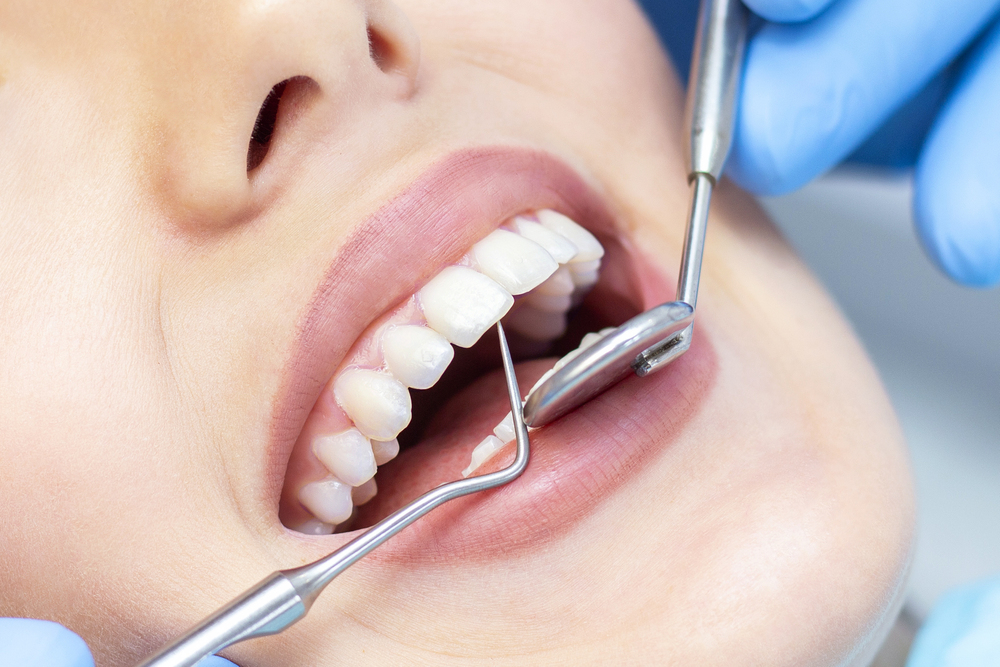
Runway-Ready Smiles: The Influence of Cosmetic Dentistry on the Fashion Industry
When we think of fashion, our minds often gravitate toward clothing, accessories, and hairstyles. However, an integral part of a person’s aesthetic appeal, particularly in high-fashion circles, is their smile. Over the years, cosmetic dentistry has played an increasingly significant role in shaping the overall look of models, influencers, and celebrities, making it an essential aspect of the fashion world. The fusion of cutting-edge techniques in cosmetic dentistry and the latest trends in dental care has brought smiles to the forefront as a crucial fashion statement.
The Importance of a Perfect Smile in Fashion
In the high-pressure environment of the fashion industry, image is everything. A radiant smile can enhance confidence, charisma, and presence, attributes highly valued by designers, photographers, and audiences alike. Fashion models, who are tasked with embodying the vision of a brand, rely on their physical appearance—and an impeccable smile is part of that package.
Fashion weeks, photo shoots, and red-carpet events are all about creating moments that capture attention and spark conversations. A model’s smile not only complements the designer’s creations but also resonates with the audience, making the brand’s message more relatable. Cosmetic dentistry ensures that every smile is camera-ready, transforming teeth into an accessory that matches the elegance and creativity of high fashion.
Cosmetic Dentistry: The Backbone of Runway Smiles
Cosmetic dentistry encompasses a variety of procedures aimed at enhancing the appearance of teeth. From teeth whitening and veneers to orthodontics and gum contouring, these treatments offer bespoke solutions for achieving a flawless smile. Each procedure can be tailored to align with an individual’s facial features and personal style, mirroring the custom-fit ethos of haute couture.
– Teeth Whitening: A bright, white smile has become synonymous with health, youth, and vibrancy. Advanced teeth-whitening techniques—including laser treatments and custom bleaching trays—provide fast, effective, and lasting results.
– Porcelain Veneers: These wafer-thin shells are a staple in cosmetic dentistry, offering a transformative solution for chipped, stained, or misaligned teeth. Veneers can be customized in shape, size, and color, allowing for a natural yet polished look that’s perfect for the runway.
– Orthodontics: Clear aligners such as Invisalign have revolutionized the process of straightening teeth. They’re virtually invisible, making them ideal for fashion professionals who need ongoing treatments without compromising their appearances.
– Gum Contouring: A balanced gum-to-teeth ratio contributes significantly to a harmonious smile. Techniques like laser contouring refine the gum line for a cleaner, more symmetrical appearance.
The Latest Trends in Dental Care
The advancements in cosmetic dentistry are underpinned by the latest trends in dental care, which prioritize both aesthetics and functionality. Among these innovations are:
1. Digital Smile Design (DSD): This cutting-edge technology enables patients and dentists to visualize the outcome of cosmetic procedures before treatment begins. It integrates digital imaging and 3D modeling, ensuring precise, predictable results.
2. Minimally Invasive Procedures: With the rise of patient-centric care, treatments that preserve natural tooth structure are gaining traction. For example, no-prep veneers require minimal enamel removal, offering a less invasive option for smile enhancement.
3. Eco-Friendly Dentistry: Sustainability is influencing every industry, including dentistry. Practices are adopting biodegradable materials, non-toxic adhesives, and eco-conscious processes to appeal to environmentally mindful clients.
4. Holistic Dental Care: The emphasis on overall well-being has led to a surge in holistic approaches, which consider the connection between oral health and the body. This trend aligns with the fashion industry’s increasing focus on wellness and self-care.
5. Biomimetic Materials: Advances in materials science have introduced biomimetic options that mimic the natural properties of teeth. These materials enhance the durability and appearance of restorations, ensuring they blend seamlessly with natural teeth.
Cosmetic Dentistry and Celebrity Influence
Celebrities have long been trendsetters, and their endorsement of cosmetic dentistry has propelled its popularity. Hollywood’s obsession with the “perfect smile” has trickled down to the fashion industry, where designers often collaborate with stars to bring their visions to life. For instance, a dazzling smile featured on a billboard or magazine cover can become just as iconic as the outfit being showcased.
Social media platforms have further amplified this phenomenon. Influencers and fashion icons frequently share their dental transformations, inspiring millions to prioritize their smiles. These digital endorsements not only drive interest in cosmetic dentistry but also set the standard for what is considered “runway-ready.”
The Future of Fashion and Dental Aesthetics
As cosmetic dentistry continues to evolve, its integration with the fashion industry will likely deepen. Emerging technologies such as AI-driven diagnostics and robotic-assisted procedures promise even greater precision and personalization. Additionally, the focus on inclusivity in fashion may influence the industry to celebrate a diverse range of smiles, breaking away from uniform standards of beauty.
Moreover, collaborations between dental professionals and fashion brands could become a norm, with designer smiles curated to complement specific collections. Think of it as the ultimate accessory: a smile that tells a story, enhances the outfit, and captures the audience.
The influence of cosmetic dentistry on the fashion industry is undeniable. From creating radiant smiles that light up the runway to setting new trends in dental care, the synergy between these fields has redefined aesthetics. As the demand for “perfect” smiles grows, cosmetic dentistry will remain at the forefront, shaping not just the faces of fashion but the future of beauty itself. In the end, a stunning smile isn’t just a fashion statement; it’s a timeless work of art.
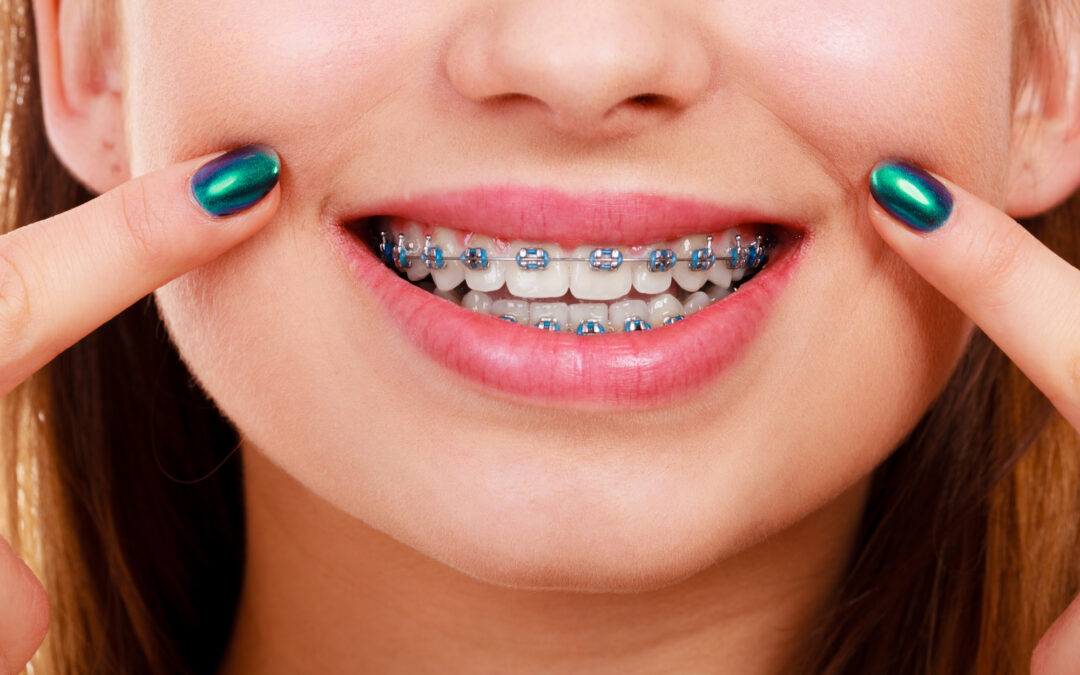
Cost, Care, and Results: Comparing Today’s Top Cosmetic Dental Procedures
Everyone knows that moment – staring in the mirror, wishing their teeth looked different. These days, fixing your smile is easier than ever – and there are options for every budget. The best part? Modern dentists can work magic with extensive transformations in cosmetic dentistry that totally change how you look and feel.
1. Getting a Total Smile Makeover
Take Sarah’s story – she got her whole smile redone, and what a difference! A few missing teeth and some crooked ones had bothered her for years. Her dentist used a mix of treatments – fancy caps for damaged teeth and replaced the missing ones with implants. Yes, it wasn’t cheap, but seeing her beam with confidence now? Worth it for her.
Her case shows just how far extensive transformations with cosmetic dentistry have come – from fixing badly stained teeth to replacing missing ones, dentists can rebuild your whole smile from scratch.
2. Keep Those Pearly Whites Shining
The thing about getting dental work done – it needs serious dedication. A diligent oral hygiene routine isn’t just a fancy phrase – it’s your ticket to making sure that beautiful new smile lasts. Think of it like a nice car. Skip the oil changes, and you’ll have problems down the road. The same goes for your new smile.
Brush twice daily, floss like you mean it, and never skip those dental check-ups. These habits might seem basic, but they’re what keep those cosmetic treatments looking fresh for years.
Most people don’t realize that maintaining cosmetic dental work takes a bit more effort than caring for natural teeth.
3. Baby Steps to Better Teeth
Not ready to go all-in? Lots of people start with teeth whitening, and it makes such a difference. Get it done at the dentist’s office or try those take-home kits. Way cheaper than a full makeover, but still gives that confidence boost everyone’s looking for. Plus, it’s a great way to test the waters of cosmetic dentistry without making a huge commitment.
4. Straightening Without the Metal Mouth
Remember those clunky metal braces from high school? Thank goodness those days are over! Now there are clear aligners – barely visible, and they pop out for special occasions. They cost more than old-school braces, but most people love not having to worry about food stuck in metal brackets.
Best of all? They’re practically invisible in photos and meetings.
5. Quick Fixes for Little Problems
Chipped teeth? No problem. Dentists can fix those with something called bonding – tooth-coloured putty that looks natural. Some folks go for veneers instead – thin shells that cover the front of teeth. The results can be amazing, and these fixes can last for years with proper care.
Modern bonding materials are so advanced that they can match your natural tooth colour perfectly. Even dentists sometimes have trouble spotting the difference between bonded areas and real tooth enamel. That’s how good the technology has gotten.
Just remember – a healthy smile is what matters most. All of the cosmetic procedures in the world will be meaningless until the essentials are addressed. Sometimes the simplest lessons are the most essential.
Whether you’re looking for a minor touch-up or a full smile makeover, success depends on choosing the appropriate treatments and committing to regular maintenance.
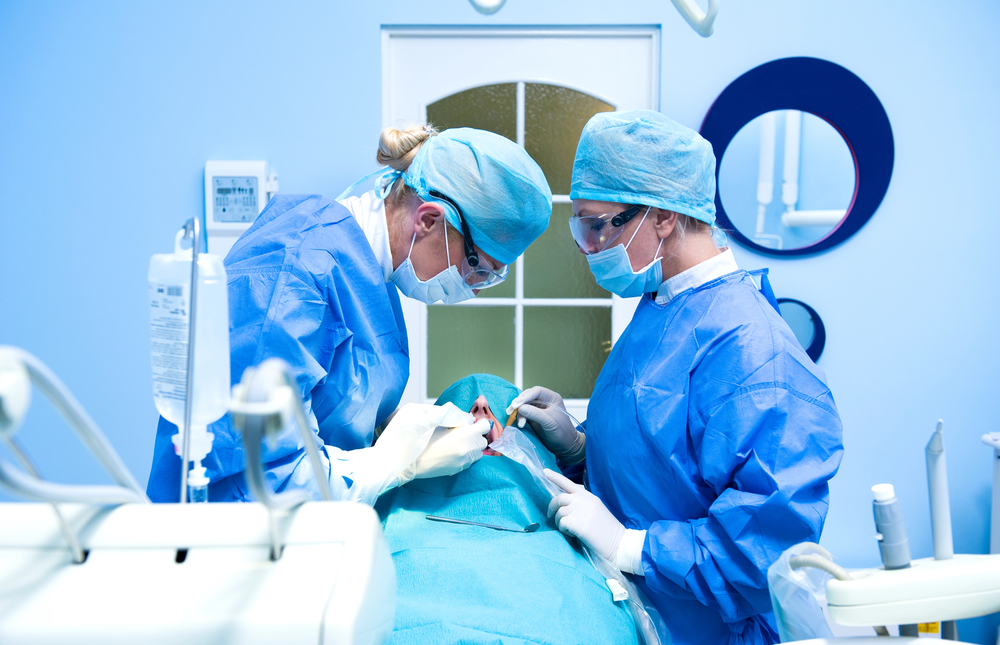
Choosing the Right Restorative Dentistry Treatment for Your Oral Health Needs
Nobody hates a beautiful smile. However, poor oral health is a hindrance to that smile. A good smile does not only enhance your beauty but also adds to your overall body health. Poor dental health is characterized by tooth cavities and gum issues and prevent healthy smile. Luckily, restorative dentistry treatments offer options to improve people’s smiles and dental health. Procedures such as dental crowning, bridging, teeth whitening, filling, and implants are common restorative treatments methods used to treat dental issues. Restorative dentistry is critical and requires the patient to correctly choose the treatment procedure depending on their unique dental needs. When choosing the treatment methods, let an experienced professional guide you on the factors to consider. The aim of this article is guide you on what should determine the restorative dentistry treatment.
Dental Needs
The treatment you choose depends on your dental issue. Know your dental problems and what kind of treatment you desire. A professional chooses treatment according to complexity or simplicity of the issue. Although you have a role to play in understanding your primary dental problem, the dentist should guide you by conducting thorough dental examination.
Technology and Techniques
Dental office facilities and technology are fundamental in giving the patient the desired treatment and improving their comfort. Restorative dentistry evolves continually with the introduction of new techniques and technologies. With the right materials and technology, restorative dentistry today offers treatment options to solve your problem quickly and comfortably. Technologies like laser dentistry and 3D imaging offer efficient treatment. Dentists who embrace these innovations are likely to offer you optimal care.
Dentist Experience
Restorative dentistry involves a broad spectrum of procedures. Choosing a professional with a wide range of experience and who has done numerous procedures before is wise. Ensure the professional is experienced in meeting your specific needs. An experienced dentist will give you the best experience and the desired results at the right time. Choosing an experienced restorative dentist minimizes the risk of complications, improving outcomes. They will also likely use the latest technology and techniques to treat you.
Treatment Goals
Different people have different dental treatment goals. You should define your treatment goals to be able to choose the right restorative procedure. Your goal might be cosmetic related or health related. If your objective is to enhance your smile and beauty, latest trends in cosmetic procedures including teeth whitening, dental veneers, and composite bonding are the right treatments. For functionality restoration, teeth replacement and filling are the best treatment depending on your issue.
Budget
Dental treatments, especially those in restorative dentistry, are expensive and vary in cost. You need to understand your financial ability and insurance arrangements before choosing a procedure. Determine if the procedure fits within your budget, and talk to your insurance to find out if it will cover the treatment cost. Let the dental professional be transparent with information about payment plans and financial options to help you make the right decision.
Restorative dentistry has improved, and it is not only being used for cosmetic purposes but also for oral health issues. It involves restoration treatments such as repairing, replacing and restoring to improve dental health and smile of patients. Factors to consider when choosing the right restorative dentistry treatment are dental issues, treatment goals, technological advancement, experience and budget.
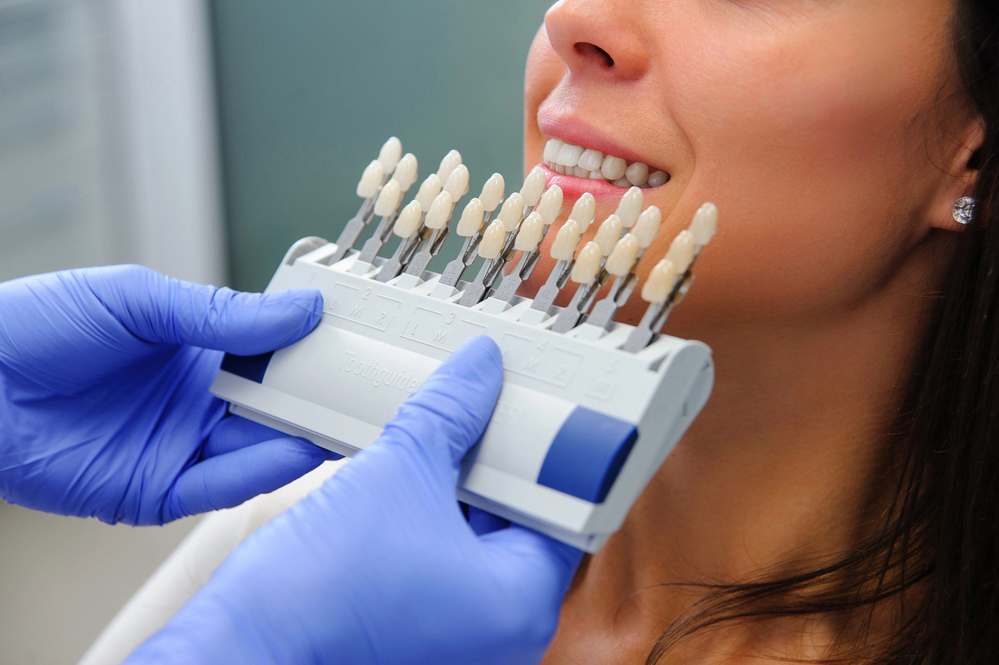
The Evolution of Veneers: How Cutting-Edge Tech Delivers Natural Results
Veneers have long been a cornerstone of cosmetic dentistry, offering patients the chance to transform their smiles with thin, custom-made shells designed to cover the front surface of teeth. Over the years, veneers have evolved significantly, thanks to advancements in dental materials, techniques, and technologies. Today, cutting-edge innovations are ensuring that veneers not only enhance aesthetics but also deliver results that are remarkably natural and long-lasting.
A Brief History of Veneers
The concept of veneers dates back to the 1920s when they were first used temporarily in Hollywood to enhance the smiles of actors. Early veneers were rudimentary, lacked durability, and were primarily for short-term use. It wasn’t until the 1980s, with the development of modern bonding techniques and porcelain materials, that veneers became a more permanent solution.
Fast forward to today, and the veneer landscape has transformed entirely. The introduction of hybrid veneers and advanced dental technologies has propelled this cosmetic treatment into a new era.
What Are Hybrid Veneers?
Hybrid veneers are a recent innovation that combines the best features of traditional porcelain and composite veneers. These veneers are crafted using a blend of ceramic and composite materials, offering the durability and aesthetics of porcelain with the flexibility and repairability of composites. Hybrid veneers are thinner than traditional options, often requiring minimal or no tooth reduction, making them a more conservative choice for patients seeking smile enhancements.
The appeal of hybrid veneers lies in their ability to closely mimic the translucency and texture of natural teeth. Patients benefit from faster treatment times and a cost-effective solution without compromising on appearance or quality.
Technologies Transforming Dental Clinics
The rise of cutting-edge technologies in dentistry has revolutionized the process of creating and applying veneers. From diagnosis to placement, these innovations ensure precision, efficiency, and outstanding results.
1. Digital Smile Design (DSD)
Digital Smile Design software allows dentists to create a virtual mockup of a patient’s smile before any physical work is done. Using 3D scans, photos, and videos, dentists can design veneers that align perfectly with a patient’s facial features, ensuring a harmonious and natural look.
This technology empowers patients to visualize their future smiles and provide input, making the process collaborative and personalized.
2. CAD/CAM Technology
Computer-Aided Design and Manufacturing (CAD/CAM) technology has revolutionized the production of veneers. Instead of relying on manual techniques, dentists can now use digital impressions to design veneers with incredible accuracy. These designs are then milled from high-quality materials using CAM systems, often within the clinic itself.
This technology has also enabled the advent of same-day veneers, significantly reducing treatment timelines. Patients can walk into a clinic and leave with a transformed smile in just a few hours.
3. 3D Printing
3D printing is another game-changer in veneer fabrication. It allows for precise prototyping and production, reducing the margin for error. With 3D printing, dentists can create trial veneers for patients to test-drive their new smiles before final placement, ensuring optimal satisfaction.
4. Advanced Bonding Techniques
The longevity and natural appearance of veneers depend heavily on how they’re bonded to teeth. New adhesive materials and techniques provide stronger bonds that resist discoloration and wear, ensuring that veneers remain securely in place for years while maintaining their aesthetic appeal.
Benefits of Technological Advancements
The integration of these technologies into dental clinics has elevated the veneer experience for both patients and practitioners:
– Enhanced Precision: Digital tools reduce human error, resulting in veneers that fit seamlessly and look entirely natural.
– Greater Customization: Patients can achieve smiles tailored to their unique facial structure and preferences.
– Faster Treatment Times: Innovations like CAD/CAM and same-day technology have significantly shortened the time required for veneer procedures.
– Improved Patient Comfort: Digital impressions and minimally invasive techniques minimize discomfort during the process.
– Cost-Effectiveness: While upfront costs for advanced technologies may be higher, they lead to more efficient procedures and durable results, providing long-term value to patients.
The Future of Veneers
As dental technology continues to advance, the future of veneers looks promising. One exciting area of development is nanotechnology, which has the potential to create ultra-durable materials that mimic natural tooth enamel even more closely. Additionally, artificial intelligence (AI) is being integrated into treatment planning, offering predictive insights and enhanced precision.
Patients can also expect more eco-friendly practices as sustainable materials and methods become a priority in dental care. These innovations ensure that veneers remain at the forefront of cosmetic dentistry, offering solutions that are not only aesthetically pleasing but also highly functional and long-lasting.
Final Thoughts
The evolution of veneers is a testament to how far dentistry has come. From rudimentary Hollywood props to today’s hybrid veneers and digitally crafted masterpieces, veneers have undergone a remarkable transformation. Modern technologies are transforming dental clinics, making the process more efficient, precise, and patient-centered than ever before.
For those considering veneers, the integration of these cutting-edge innovations ensures results that are not only stunning but also sustainable, bringing dreams of a perfect smile within reach. With the continued advancement of dental technology, the journey to a flawless smile has never been more exciting or achievable.
